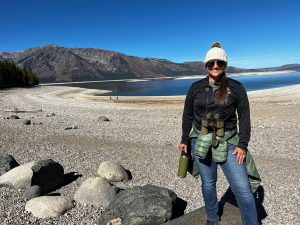Samantha E. Gigliotti
Ph.D. Candidate, Department of Ecology, Evolution, and Natural Resources, Rutgers University
MS, Biology, East Stroudsburg University
BS, Biology, East Stroudsburg University
As a first-generation and female Puerto Rican student, a major goal for me is to increase the diversity and voices of underrepresented scientists in the field of forest ecology. I seek to have a professional career in academia where I can continue to work in urban and suburban landscapes while continuing to provide diverse ideas and perspectives to this field.
Research Focus: Canopy gap restoration in urban and suburban landscapes
Currently, I have two research sites: Hutcheson Memorial Forest, which is an old-growth forest surrounded by younger growth, located in Somerset, New Jersey and Three Springs Hollow in Pennypack Park, which is a forest located in Philadelphia, Pennsylvania. The work at Pennypack Park is conducted alongside USDA’s Forest Service and Philadelphia Parks and Recreation.
Hutcheson Memorial Forest: Silvicultural Strategies of Northeastern Forests: Artificial Regeneration of Forest Canopy Gaps.

The inability to regenerate canopy trees in Northeastern urban and suburban forests are a major concern for forestry professionals, managers, landowners, and the community at large. Much of this regeneration failure can be attributed to intense deer herbivory and dominance of invasive plant species. The goals of this project are to develop silvicultural strategies that can effectively and rapidly close canopy gaps in urban and suburban forests in response to deer browsing, invasive species, and urban stressors. It hypothesized that early successional species planted alongside locally adapted oaks will facilitate the restoration in oak dominated northeastern forests. Specific objectives of this project are: 1) to test four different silvicultural strategies to enhance canopy gap regeneration, 2) identify if early successional species are facilitating oak restoration and how significant this facilitation is, 3) determine whether locally adapted oaks or southern oak genotypes, that account for climate resiliency, have a greater success of closing canopy gaps, and 4) develop best management approaches in the planning and planting of trees in oak dominated forests.
Hutcheson Memorial Forest Volunteers Plant Native Trees in Forest Canopy Restoration Effort
